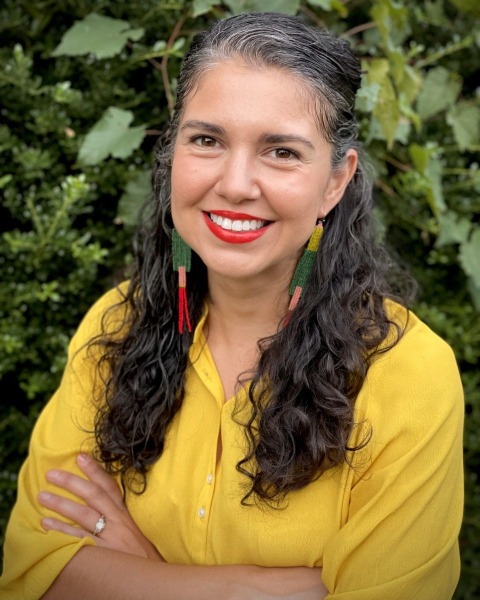Back
Posters
Poster Judging Hour
Exploring Intergenerational Posttraumatic Growth Among Survivors of CSA & Their Daughters
Friday, March 14, 2025
6:00 PM – 7:00 PM US Eastern Time
Learning Level: Beginning

Alicia Mendez, PhD, MSW
Research Assistant Professor
Boston University
Boston, Massachusetts, United States
Abstract
Purpose
The process of intergenerational trauma transmission occurs when individuals experience an adverse event so impactful that their offspring display similar if not identical trauma symptoms as their parents do, absent their own personal trauma experience (Yehuda & Lehrner, 2018). This transmission has been documented and explained in numerous ways, but at its core, the transmission of trauma occurs through the connection between parent and child (Alpert, 2015; Cromer et al., 2018). One area where the intergenerational trauma process has been shown to occur is among adult survivors of child sexual abuse (CSA) who then have children of their own (Lomanowska et al., 2017; Trickett et al., 2011). Research examining the intergenerational effects of trauma stemming from CSA have shown that the second-generation offspring mirror their mothers’ psychopathology, insecure attachment patterns, and negative social outcomes compared to offspring born to mothers without CSA experience (Finkelhor et al., 1997; Kwako et al., 2010; Langevin et al., 2020). Less focus has been given to the positive meaning-making, that may occur for both mothers and daughters/offspring experiencing this transmission, otherwise known as posttraumatic growth (Calhoun et al., 2022). The purpose of this study was to examine how and what typologies of posttraumatic growth may occur between survivors of CSA and their unabused young-adult daughters/offspring.
Methods
This dyadic qualitative study utilized Narrative Inquiry and Life History Calendars to explore how a mother’s CSA experience and other important life events impacted both mother and daughter/offspring (Kim, 2015). Participants (n=15; seven mothers and eight daughters/offspring) completed two 60–90-minute interviews. Data were analyzed using an analysis of narratives approach, highlighting common themes that represent a moment in time (past, present, future).
Findings
Results indicate that mothers and daughters/offspring experienced multiple instances of posttraumatic growth in relation to the mother’s CSA experience and other important life experiences. Themes emerged including: education, healthy relationships, dyadic healing, mental health, on the lookout, trust your gut, and open communication. Central to these themes were strategies to preventing CSA and examples of how the daughters/offspring experienced different, more healthy, childhoods than their mothers.
Conclusions
These findings represent one of the first examples of intergenerational posttraumatic growth among survivors of CSA and their children. This study provides explicit examples of strategies that mothers used to prevent CSA from occurring, expanding our understanding about such behaviors (Guggisberg et al., 2023). Further, results highlight the need to reframe previously detriment-focused understandings of parenting after CSA experience. Behaviors such as hypervigilance or parentification perhaps occur on a spectrum and, as these results suggest, can be effective at breaking cycles of CSA and result in relational healing.
Purpose
The process of intergenerational trauma transmission occurs when individuals experience an adverse event so impactful that their offspring display similar if not identical trauma symptoms as their parents do, absent their own personal trauma experience (Yehuda & Lehrner, 2018). This transmission has been documented and explained in numerous ways, but at its core, the transmission of trauma occurs through the connection between parent and child (Alpert, 2015; Cromer et al., 2018). One area where the intergenerational trauma process has been shown to occur is among adult survivors of child sexual abuse (CSA) who then have children of their own (Lomanowska et al., 2017; Trickett et al., 2011). Research examining the intergenerational effects of trauma stemming from CSA have shown that the second-generation offspring mirror their mothers’ psychopathology, insecure attachment patterns, and negative social outcomes compared to offspring born to mothers without CSA experience (Finkelhor et al., 1997; Kwako et al., 2010; Langevin et al., 2020). Less focus has been given to the positive meaning-making, that may occur for both mothers and daughters/offspring experiencing this transmission, otherwise known as posttraumatic growth (Calhoun et al., 2022). The purpose of this study was to examine how and what typologies of posttraumatic growth may occur between survivors of CSA and their unabused young-adult daughters/offspring.
Methods
This dyadic qualitative study utilized Narrative Inquiry and Life History Calendars to explore how a mother’s CSA experience and other important life events impacted both mother and daughter/offspring (Kim, 2015). Participants (n=15; seven mothers and eight daughters/offspring) completed two 60–90-minute interviews. Data were analyzed using an analysis of narratives approach, highlighting common themes that represent a moment in time (past, present, future).
Findings
Results indicate that mothers and daughters/offspring experienced multiple instances of posttraumatic growth in relation to the mother’s CSA experience and other important life experiences. Themes emerged including: education, healthy relationships, dyadic healing, mental health, on the lookout, trust your gut, and open communication. Central to these themes were strategies to preventing CSA and examples of how the daughters/offspring experienced different, more healthy, childhoods than their mothers.
Conclusions
These findings represent one of the first examples of intergenerational posttraumatic growth among survivors of CSA and their children. This study provides explicit examples of strategies that mothers used to prevent CSA from occurring, expanding our understanding about such behaviors (Guggisberg et al., 2023). Further, results highlight the need to reframe previously detriment-focused understandings of parenting after CSA experience. Behaviors such as hypervigilance or parentification perhaps occur on a spectrum and, as these results suggest, can be effective at breaking cycles of CSA and result in relational healing.
Learning Objectives:
At the conclusion of this session participants will be able to:
- Define intergenerational trauma, posttraumatic growth, and intergenerational posttraumatic growth
- Discuss the ramifications of child sexual abuse on the second generation
- Describe the different typologies of intergenerational posttraumatic growth that may occur
- Critique pathologized parenting behaviors that occur after complex trauma
- List strategies that parents can apply to prevent child sexual abuse from occurring

